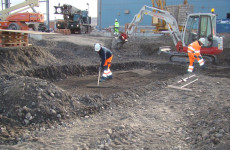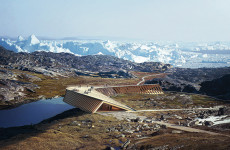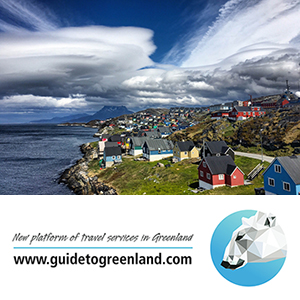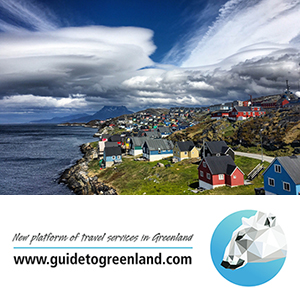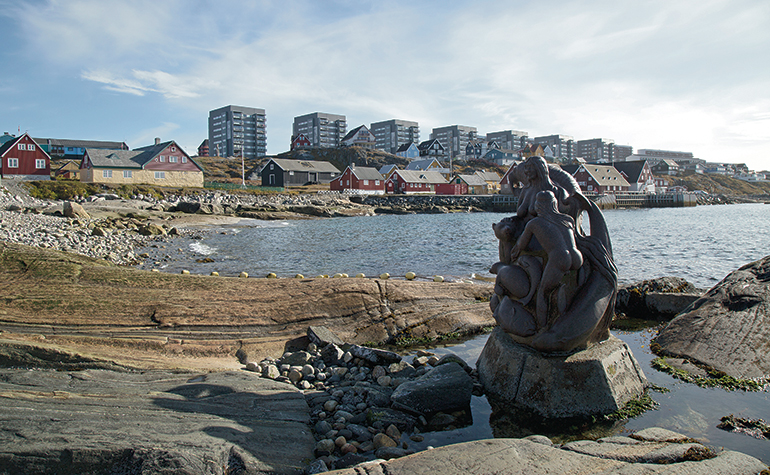
Greenland’s capital, Nuuk, has published an ambitious »Capital Strategy« which, among other things, predicts that the city should have the capacity for 30,000 people in the year 2030
Text: Mads Nordlund, greenland today November 2016
Photo on top: Stine Selmer Andersen
Things are moving fast in Nuuk. The many building cranes bear witness to this. The city is growing. It has been doing so for many years, interrupted only by short breaks such as during the recent financial crisis, where the pace slowed, but did not stop completely.
If you walk round the city’s shops, you also notice the increased activity. There are more customers in town and new shops have opened which is a good sign of confidence in the future.
Strategy
Strategy means roughly »the direction we should take« and as a guide for future development a unanimous municipal council headed by mayor Asii Chemnitz Narup has adopted and published the strategy for the capital: »Nuuk – Arctic Capital«.
A plan is necessary in order to ensure the healthy development of Greenland’s capital in the future for all the citizens of the city, says the mayor. If Nuuk becomes a capital for the entire Arctic, it will raise an awareness that will benefit the entire country, wrote the mayor in the foreword to the strategy.
That good planning is necessary for Nuuk is something that is evident from other capitals. Since 2010, the distribution of people all over the world between rural and urban has tipped over, so more people live in cities and towns than in the country. This makes demands on the infrastructure in the way of roads and public transport, sewerage, shops, buildings, schools etc., and Nuuk is no exception.
The effects are already felt here, for example in the rush hour traffic. For the present, the problem has been solved by making some streets one-way at certain times. When Nuuk grows to twice the size it is now, new roads will be needed as well as increased traffic regulation, etc.
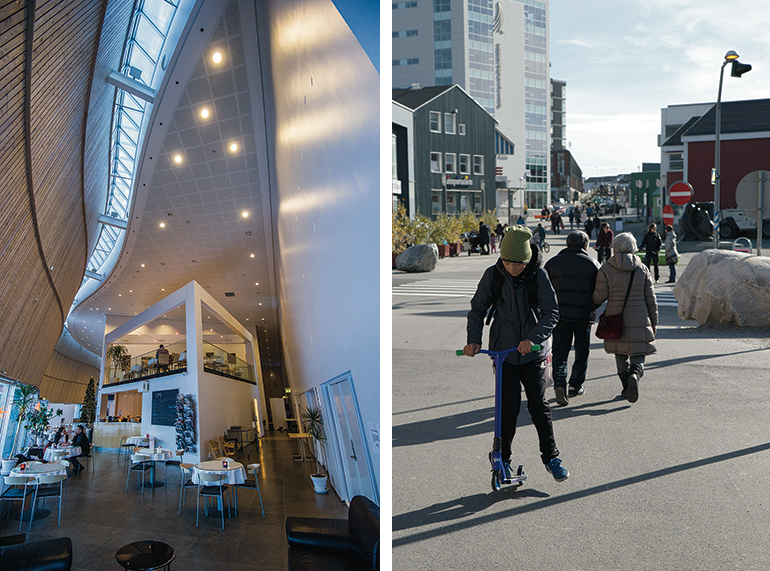 Photo: Left, Evy Aller Holding. Right, Stine Selmer Andersen
Photo: Left, Evy Aller Holding. Right, Stine Selmer Andersen
The year 2030
Migration from rural to urban areas is not determined by politicians, but it is driven by the desire to get an education and by other needs such as employment and ways to make a living. For the same reasons, it has been traditional in Greenland to move around. Hunting communities had summer and winter camps, all according to where the prey was in each season. If you look at Nuuk’s nearest Nordic neighbours, 33% of the population in Iceland live in the capital, Reykjavik – more than 60% if you include the suburbs.
On the Faroe Islands, the population is almost comparable, with about 5,000 fewer Faroese than Greenlanders. Here, »only« 38% live in Torshavn, the capital, but the islands have a better infrastructure with roads and tunnels, enabling more people to live outside the capital and commute to work.
In Greenland, there are no roads between the towns. Here, you must sail or fly between towns and villages and, like the rest of the world, only a few people return to the smaller places, once they have lived in a town. Thus Nuuk will continue to grow and if the predictions of the »Capital Strategy« come true, a lot of planning and preparation will be necessary before the city has capacity for 30,000 inhabitants, the equivalent of 55% of the country’s population.
The city of opportunity
Plans for the future include expansion of both port and airport. This is necessary, to ensure the supply lines can cope with continued development. With the growing interest for the Arctic, the Capital Strategy also expresses a desire that Nuuk be the first choice when politicians, businesses and tourists look to the North.
With an internet connection via submarine communications cable to the rest of the world and a sound investment climate, it is not unthinkable that companies with business in the Arctic could consider having an office here.
Being the main port for shipping on Greenland’s west coast, Nuuk is in a good position for when it becomes possible to use the North West Passage.
The capital still wants an international airport, mainly because most of the passengers who are not tourists fly to and from Nuuk.
 Photo: Mads Nordlund
Photo: Mads Nordlund
Nuuk as a destination
For some time, the Sermersooq Business Council has worked under the slogan »Colourful Nuuk« to bring businesses and tourists to Nuuk, participating in various travel fairs.
In many other countries, city breaks are a common form of holiday. In Nuuk, it is possible to combine the city’s many cultural and gastronomic offers with magnificent nature experiences. The mountains of Sermitsiaq, Store Malene and Lille Malene as well as Hjortetakken change constantly with the daylight and the seasons.
Several islands lie outside Nuuk and Akia, with its chain of mountains, is probably one of the Greenland’s most photographed places during sunsets.
The hinterland and the fjord are easily accessible by foot or by boat. For most of the year it is also possible to visit the head of the fjord where there are icebergs, whales and abundant wildlife.
Like the rest of Greenland, Nuuk has magnificent northern lights, so many people take the opportunity to visit the capital in the winter months, for exam-ple in combination with Iceland.
Growing pains
Today, Nuuk has more than 17,000 inhabitants and several major construction works with associated jobs will soon be complete, among them a new correctional facility and the »Sikuki Nuuk Harbour« – a new, future-oriented port. The future must judge whether development is taking place in a sustainable manner, where the beautiful surroundings of the city are preserved and involved recreationally, as the strategy suggests.
One thing is certain: When you can see development is going in one direction, it is better to be prepared and to try to stay ahead. With the new capital strategy, Nuuk hopes to be just that: a well-prepared capital for the whole of the Arctic.
See more
sermersooq.gl
business.gl
colourfulnuuk.com
kriminalforsorgen.gl
sikuki.gl
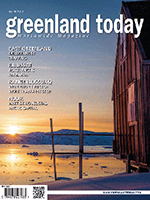 See the article on page 29-31
See the article on page 29-31
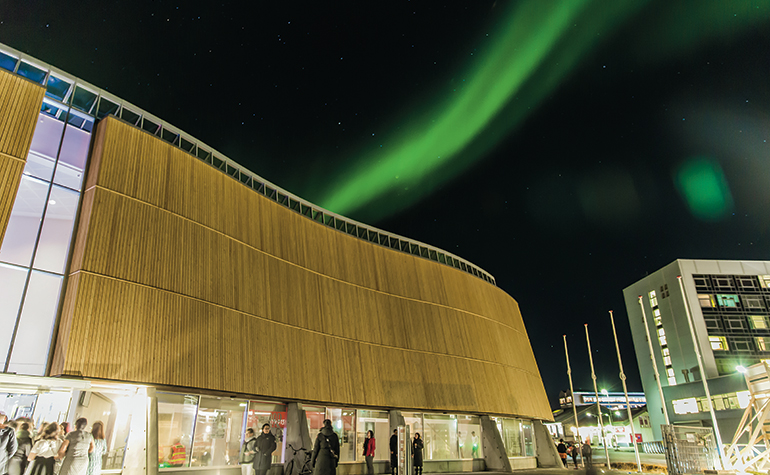 Photo: Dida Heilmann
Photo: Dida Heilmann


